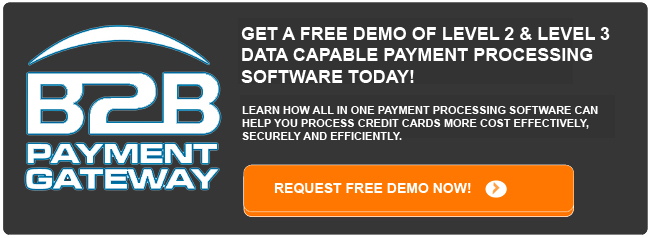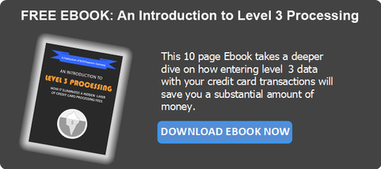 Whether you’re starting a brand new business or have been processing for years these three keys will help you lower your credit card processing fees on B2B payments, which can have an immediate and significant impact on your bottom line.
Whether you’re starting a brand new business or have been processing for years these three keys will help you lower your credit card processing fees on B2B payments, which can have an immediate and significant impact on your bottom line.
1. Do Your Research
Picking the right merchant service provider can be a time consuming and stressful experience. Because of this, many new businesses will just go with the first merchant service provider they come across. It’s important to research multiple merchant service providers so you can compare the few that accommodate your B2B transactions. Think about who your customers are and how you will process credit cards. What percentage of your transactions will be swiped vs. keyed in?
If your business needs to process level 2 or level 3 data, pick a merchant service provider that will be able to accommodate those needs. Most sales reps are only trained on the industry basics with an emphasis on retail swiped businesses so chances are they will not understand how to properly set up a business that accepts credit cards from other businesses. Also, most providers will require a two or three year contract, so do your research beforehand and make sure you get this right so you’re not stuck with a provider that can’t facilitate level 3 credit card processing.
2.Shop Around
Once you’ve established which providers can accommodate your B2B processing needs, shop around get a quote from each of them. This will give you leverage so they’ll be fighting for your business. Shopping around works for business that are already processing as well. Simply call other merchant account providers and let them know what other companies are quoting you and ask if they can beat it. Be sure to get the application in writing with all the rates and fees so you can be sure there are no other hidden fees.
Show them your existing statements and they’ll show you where and how much they can save on your processing fees. Many companies think they’re stuck with their merchant service provider once they start processing, this is false. In fact, a lot of providers will cover any cancellation fees you might have if you’re processing a fair amount of volume. If you’re brand new to processing, ask if you can get a copy of their contact before signing it and then show that to other providers.
After you repeat the process a few times, you’ll be amazed at how much money you’ll save in processing fees as opposed to signing the first contract you see. Shopping around is the best thing you can do to negotiate the best B2B processing fees.
3. Know Your Clients & Keep Records
After you’ve shopped around and chosen the right provider, keeping great records of your clients and their purchases will help you save money in several ways. Once you have a few months worth of processing statements, you can use that as leverage to shop around for a better rate or even renegotiate your rates with your current provider. Keeping track of your customers and learning their spending habits will also help you avoid unnecessary chargebacks.
Furthermore, keeping records will help you better understand your processing statements so you can see where and how you’re being charged each time you process a card. For example, you may notice that a lot of the payments you are taking are government purchase cards or business and corporate credit cards. If you seldom process debit cards, you are rarely getting that low “qualified,” rate that was quoted to you. This scenario would explain all of the mid and non-qualified surcharges you see on your statement.
If this is the case, you should research for better interchange fees for those specific cards instead of being enticed by low rates that typically only apply to cards that you rarely receive from customers. Also, if you haven’t already, look into the benefits of processing level 3 data.

 the US still uses the less secure, magnetic strip. Smart card technology isn’t new. In fact, the majority Europe uses smart card technology, and has been doing so for the past decade. The embedded chip allows for more data encryption and could’ve easily stopped Target’s breach. With more and more countries adopting smart card technology, the US has become a top target.
the US still uses the less secure, magnetic strip. Smart card technology isn’t new. In fact, the majority Europe uses smart card technology, and has been doing so for the past decade. The embedded chip allows for more data encryption and could’ve easily stopped Target’s breach. With more and more countries adopting smart card technology, the US has become a top target. 
 convenience store, a restaurant, or any other enterprise where the business is selling their product or service directly to the consumer. Level 1 processing requires the least amount of data from the consumer, usually just their name, the amount of the transaction, and the date the transaction was made.
convenience store, a restaurant, or any other enterprise where the business is selling their product or service directly to the consumer. Level 1 processing requires the least amount of data from the consumer, usually just their name, the amount of the transaction, and the date the transaction was made.